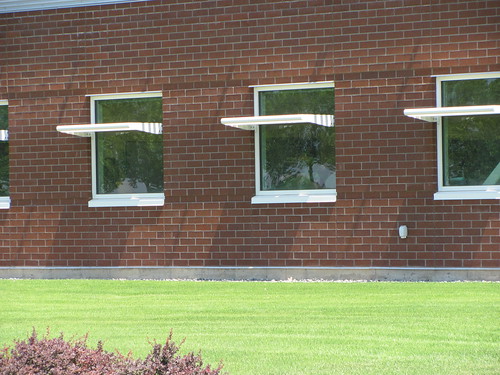SCIENCE
PNNL improving commercial building energy efficiency
Commercial buildings account for 18 percent of U.S. energy consumption. In an effort to significantly reduce energy use from these buildings, public and private entities are teaming as part of the Commercial Buildings Partnership to design and implement energy efficient measures. The partnership is kicking off a three-year program, funded through the U.S. Department of Energy's Building Technologies Program, which will lead to several new or retrofitted structures across the country. DOE announced the funding in November 2010.
DOE's Pacific Northwest National Laboratory will work with Home Depot in California; Grand Valley State University in Michigan; the U.S. Army in Ft. Bragg, N.C.; U.S. General Services Administration in New England; the U.S. Job Corps in Reno, Nev.; and the Smart Grid Development in Kingstown, R.I., to help retrofit existing structures or design new structures that exceed current energy efficiency codes by at least 50 percent for new buildings and 30 percent for existing buildings. Some buildings are attempting to use renewable energy and energy efficiency measures to produce as much energy as they consume on an annual basis.
The projects will serve as test beds and training centers for innovative building-related research and will demonstrate how energy use can be dramatically reduced in commercial buildings — to help spur wider adoption of energy efficient building practices across the industry.
At Home Depot, for example, the team will design and construct an energy efficient prototype store in California that will require up to 50 percent less energy than current code. This code is known as the American Society of Heating, Refrigerating and Air-Conditioning Engineers (ASHRAE)/Illuminating Engineering Society of North America (IESNA) Standard 90.1-2007 compliant buildings.
"The program will enable PNNL to use the knowledge and skills developed over three decades of buildings energy efficiency research to help commercial building owners and operators take advantage of huge opportunities for energy savings — and accelerate the widespread deployment of cost-effective, energy saving measures in commercial buildings across the U.S.," said Michael Baechler, senior buildings program manager at PNNL.
Each project partner will receive technical assistance valued at between $200,000 and $700,000, depending on the scope of work. Partners also will contribute 20 percent in cost-share to each project.
The American Recovery and Reinvestment Act funded the work. To learn more about DOE's Building Technologies Program visit: www.eere.energy.gov/buildings.

